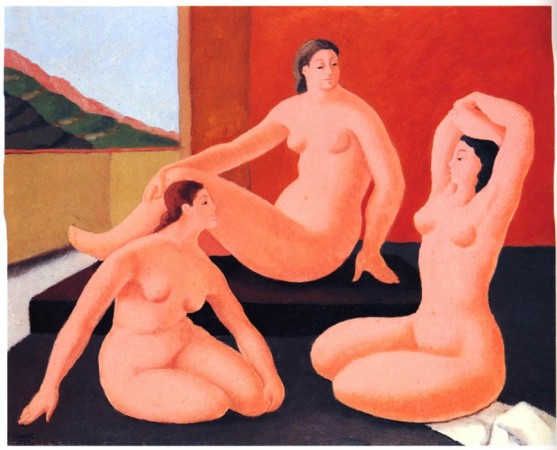| Simone Gentile | « previous | index | next » |
|
Simone Gentile 1918 1996
Once in South America, she and Ivanoff will split. She will then marry to the Milanese architect Maurizio Mazzocchi.
In 1954 she opens a show at Muller Gallery in Buenos Aires, where the reviews and the receptiveness in the audience is fabulous and she begins to step stronger and stronger into the local and regional art scene.
Her style and technique grew together with her, blending the tight relationship with the decorative arts and the plastic repertoire of a consecrated artist. She developed a melodic dimension of art, where she established a personal parallel with music in a way linked to what masters such as Verdi or Bizet did. This nested richness in her art relates to her origins in the Industrial Decorative Arts of the 1920s Paris and the continuation in Art Nouveau with the influence of artists such as Fernand Léger, de Van Dongen and at some point the very own Matisse.
Art Deco being one of the last styles that managed to embrace architecture, sculpture, painting, drawing and engraving, this can also be discovered in the basis of Applied Arts, in which’s field Simone’s creative sensitivity developed and grew.
Her nude females were composed with a monumental grace, provided not by the size of the canvass but more in relation with the figure composition and proportion, as it was cleverly pointed out by Henry Moore. The expert eye will trace in Simone’s nude figures the reminiscence of some of Lalique bas-relief on glass.
Then we find a turning point in her concept and work, focusing much more on the experience the feeling of culture which she will masterly translate into canvases. Maurizio and Simone travel a lot and spend nearly 10 years in Brazil. Simone will enter the magical world of the African roots in the modern dazzling and revolutionary Brazilian culture. These are the days of Tropicalismo in Music, Bossa Nova and the birth of the acceptance of the African Brazil thru means of social Carnival. They will frequently travel to Europe and America, to finally settle in Milan, were she will spend the last 30 years of her life.
According to the specialists such as Rafael Squirru to look retrospectively at Simone Gentile’s works means to incursion and discover countless chapters in the history of Art.
We have knowledge of her doing a copy of the Three Wise Men of Sassetta, overwhelmed by the Sienese Master’s colors.
She deeply admired a long list of Modern Painting Masters going from Botticelli to Modigliani, from Piero de la Francesca to Cezanne. And, nonetheless she managed to stamp her own authenticity stain in each and every one of her productions. Taking upon the chain of Master artists at the point it had stopped, proposing her own vision incorporating the best of each in her own particular language of art.
A continuous appearance in her works is portraits, evidence of her genius style, brilliant talent and master technique.
|
